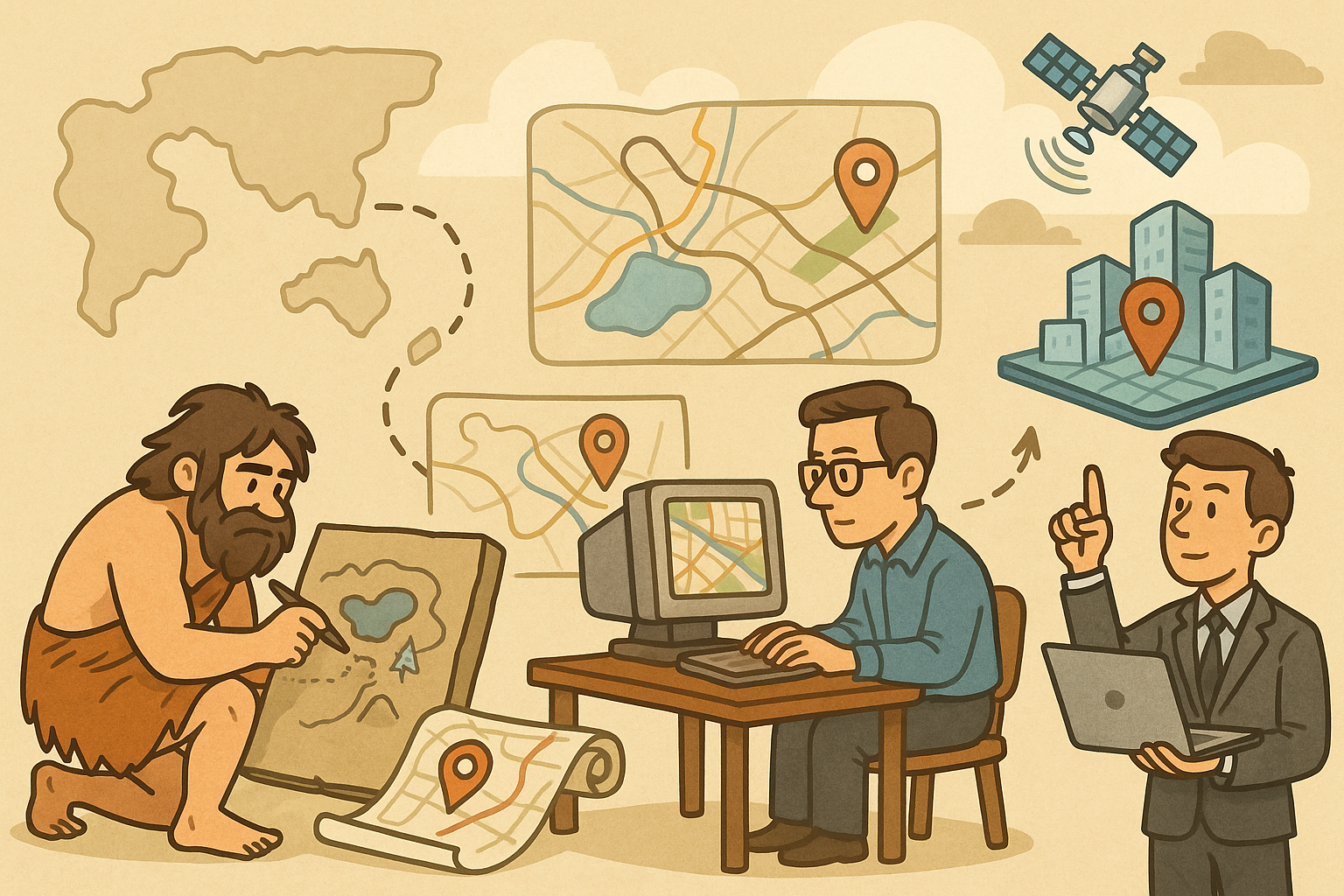Your Cart is Empty
Customer Testimonials
-
"Great customer service. The folks at Novedge were super helpful in navigating a somewhat complicated order including software upgrades and serial numbers in various stages of inactivity. They were friendly and helpful throughout the process.."
Ruben Ruckmark
"Quick & very helpful. We have been using Novedge for years and are very happy with their quick service when we need to make a purchase and excellent support resolving any issues."
Will Woodson
"Scott is the best. He reminds me about subscriptions dates, guides me in the correct direction for updates. He always responds promptly to me. He is literally the reason I continue to work with Novedge and will do so in the future."
Edward Mchugh
"Calvin Lok is “the man”. After my purchase of Sketchup 2021, he called me and provided step-by-step instructions to ease me through difficulties I was having with the setup of my new software."
Mike Borzage
Design Software History: The Evolution of AI Design Assistants: Transforming Design Software and Enhancing Creative Processes
February 12, 2025 6 min read


Introduction to AI Design Assistants in Software
The advent of artificial intelligence (AI) has ushered in a new era of technological innovation, transforming various industries and reshaping how we interact with software. In the realm of design software, the integration of AI has been particularly significant, giving rise to AI design assistants that enhance and streamline the design process. These intelligent tools are designed to assist designers by automating routine tasks, offering intelligent suggestions, and providing insights that would be arduous to uncover manually. The convergence of AI and design software represents a paradigm shift, altering traditional workflows and expanding the possibilities within design disciplines. The significance of AI integration in modern design workflows cannot be overstated, as it not only boosts productivity but also unleashes new levels of creativity and innovation. As industries continue to evolve, embracing AI design assistants becomes essential for professionals seeking to stay at the forefront of technological advancement.
Early Developments and Influential Pioneers
Tracing the history of AI in design software requires delving into the initial attempts to blend intelligent algorithms with design tools—a journey that spans several decades of technological advancement. One of the pivotal figures in the field of AI is John McCarthy, often referred to as the "father of artificial intelligence." In the 1950s, McCarthy coined the term "artificial intelligence" and initiated foundational research that would influence countless domains, including design. While McCarthy himself may not have directly developed design software, his work laid the intellectual groundwork that made subsequent innovations possible. The direct application of AI to design software began to materialize in the late 20th and early 21st centuries. Companies like Autodesk, founded in 1982 by John Walker and a group of co-founders, became trailblazers in computer-aided design (CAD) software. Autodesk's exploration of AI capabilities led to the introduction of innovative projects such as Autodesk's Dreamcatcher. Launched as an experimental design system, Dreamcatcher leverages AI to enable generative design—a process where designers input goals and constraints, and the software algorithmically generates optimized design solutions. This marked a significant step toward integrating AI into mainstream design tools. Similarly, Siemens, a global powerhouse in engineering and technology, integrated AI-driven tools into their NX software. Siemens NX is a comprehensive CAD/CAM/CAE solution that has evolved to include AI functionalities to enhance product development. By incorporating AI, Siemens NX allows for more efficient design iterations, predictive analysis, and intelligent automation of tasks. These enhancements improve not only the speed but also the quality of the design process, demonstrating the tangible benefits of AI integration. Other influential figures and companies have also contributed significantly to the integration of AI in design software. For instance, the work of Patrick Hanratty, often called the "father of CAD," laid the foundation for computer graphics and design software development. His contributions indirectly paved the way for AI integration by establishing the core principles of digital design. Collectively, these pioneers and early adopters set the stage for a continuous evolution, where AI technologies progressively became more embedded in design processes, fundamentally changing how designers conceptualize and realize their ideas.
Technological Enhancements and Integration Milestones
Over the years, the integration of AI into design software has evolved significantly, marked by technological enhancements and key milestones that have reshaped the industry. AI has been incorporated into various design tools, enhancing functionalities and providing designers with unprecedented capabilities. One notable example is the implementation of generative design in software like SolidWorks, developed by Dassault Systèmes. Generative design leverages advanced algorithms to generate optimal design solutions based on specified parameters and constraints. Designers can input objectives such as weight reduction, material usage, and structural strength, and the software produces a variety of design iterations that meet these criteria. In addition to generative design, Autodesk Generative Design employs AI-driven analytics to assess design options based on factors like performance, cost, and manufacturability. This enables designers to explore a wider design space and make more informed decisions. The integration of AI in these tools represents a significant shift from traditional design methods, allowing for the exploration of solutions that might not have been conceived through manual design processes. The underlying mathematical models and computational algorithms that enable these AI capabilities are rooted in advanced concepts like machine learning and neural networks. Machine learning algorithms allow the software to learn from data, identify patterns, and make predictions or suggestions based on that learning. Neural networks, inspired by the human brain's structure and function, empower design software to handle intricate tasks such as topology optimization, stress analysis, and predictive modeling. These technologies enable complex pattern recognition and predictive analytics in design processes. Moreover, the role of cloud computing and big data has been instrumental in enhancing AI functionalities within design applications. Cloud computing provides scalable resources and vast computational power necessary for processing intensive AI algorithms and storing large datasets. This accessibility enables designers to utilize AI tools without the limitations of local hardware constraints. Big data analytics utilizes large volumes of data to uncover insights, optimize designs, and improve decision-making processes. Key technological advancements include:
- Advanced Simulation Techniques: AI enhances simulation capabilities, allowing for more accurate testing of designs under various conditions.
- Natural Language Processing (NLP): Some design software incorporates NLP to interpret user commands and facilitate more intuitive interactions.
- Integration with Internet of Things (IoT): AI design tools can utilize data from IoT devices to inform design decisions based on real-world usage.
- Customization and Personalization: AI enables software to adapt to individual user preferences, optimizing the user experience.
AI Design Assistants: Impact and Future Trends
The impact of AI design assistants on various industries has been profound, influencing efficiency, creativity, and productivity in the design process. By automating routine tasks and offering intelligent insights, AI assistants free up designers to focus on more complex and creative aspects of their work. In sectors such as architecture, automotive, aerospace, and engineering, AI-driven tools have enabled the creation of more innovative and efficient designs. For instance, in architecture, AI can assist in optimizing building layouts for energy efficiency, structural integrity, and occupant comfort, all while adhering to regulatory standards. AI design assistants also facilitate innovation by enabling designers to explore a broader spectrum of possibilities. By providing rapid iterations and simulations, AI tools allow for the testing of ideas that would be impractical to evaluate manually. This capability accelerates the design cycle and fosters a culture of experimentation and creativity. The collaboration between human designers and AI systems leads to solutions that leverage the strengths of both, resulting in superior outcomes. Looking toward the future, several trends and potential advancements in AI integration within design software are emerging. We can anticipate increased automation, where AI takes on more significant roles in the design process, potentially handling entire stages with minimal human intervention. Intelligent decision-support systems are expected to become more prevalent, providing designers with real-time data, predictive analytics, and recommendations to inform their choices. Possible future advancements include:
- Enhanced Automation: AI handling complex design tasks autonomously, from conceptualization to optimization.
- Intelligent Decision-Support Systems: Advanced AI algorithms offering predictive analytics and optimization suggestions in real-time.
- Integration with Virtual and Augmented Reality (VR/AR): Combining AI with VR/AR for immersive design experiences.
- Adaptive Learning Systems: AI that evolves with user preferences and industry trends through feedback loops.
- Collaborative AI Systems: AI working alongside human teams, adjusting assistance based on project requirements.
Conclusion
In summary, AI design assistants have played a transformative role in modernizing the design industry. Their ability to enhance efficiency, foster creativity, and streamline workflows has made them indispensable tools in the modern designer's toolkit. The integration of AI into design software has not only optimized existing processes but has also opened new avenues for innovation that were previously unattainable. By leveraging advanced technologies such as machine learning, neural networks, and big data analytics, AI design assistants are redefining what is possible within the realm of design. However, as we embrace these advancements, it's essential to consider the challenges and ethical considerations associated with AI in design software. Issues such as data privacy, algorithmic bias, and the potential displacement of human roles require careful reflection. Ensuring that AI systems are transparent, fair, and align with human values is paramount to harnessing their full potential responsibly. The potential for AI to redefine the designer's role and the boundary between human creativity and machine intelligence is profound. Rather than supplanting human designers, AI has the potential to augment human capabilities, allowing designers to focus on higher-level conceptual tasks and strategic decision-making. The future of design lies in the collaborative synergy between human ingenuity and machine precision. As we look ahead, the continual evolution of AI promises to further revolutionize the design industry. Embracing these changes with thoughtful consideration of the associated challenges will be key to unlocking the full benefits of AI integration in design software. The journey toward a more intelligent, efficient, and creative design landscape is well underway, and the possibilities it holds are both exciting and limitless.
Also in Design News

Design Software History: Evolution of Geospatial Data Integration in Design Software: Historical Milestones, Technological Breakthroughs, and Future Trends
October 13, 2025 8 min read
Read More
Cinema 4D Tip: Optimizing Ambient Occlusion for Enhanced Realism in Cinema 4D Rendering
October 13, 2025 3 min read
Read MoreSubscribe
Sign up to get the latest on sales, new releases and more …



